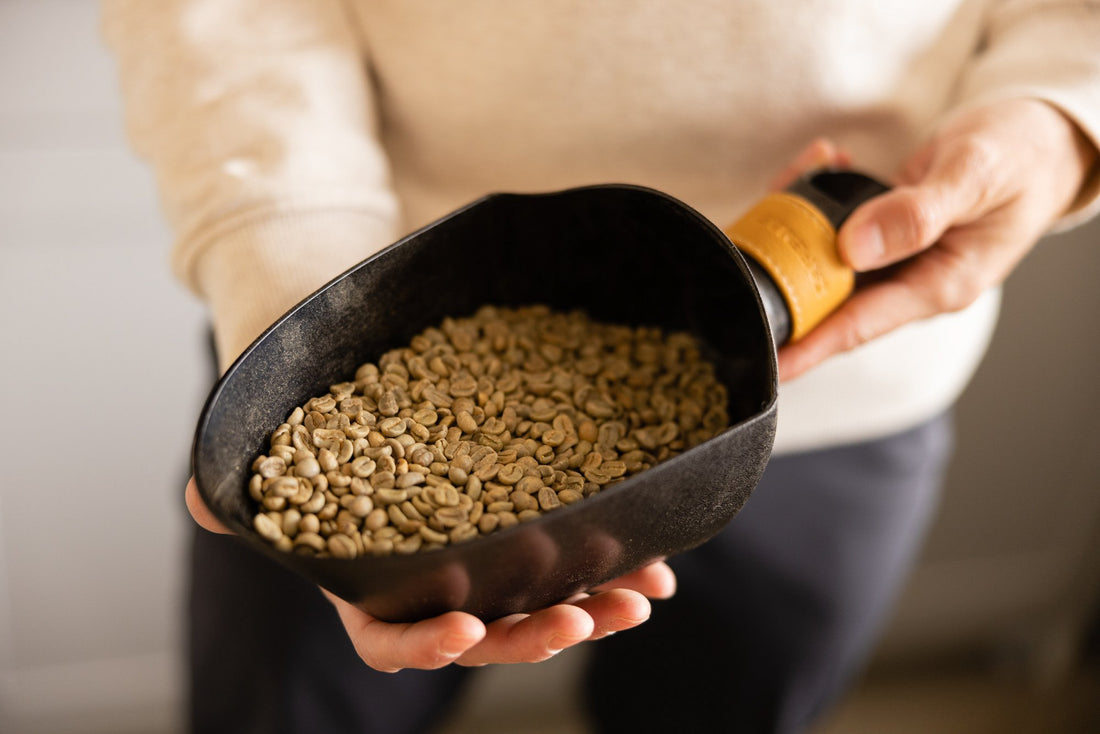Roasting is both an art & science
We’ll explore each of the various stages coffee goes through the video below.
1. Row Beans – The beans, after a very short amount of time in the roaster, will pale in color, sometimes looking almost white. The aroma for this initial phase is mostly grassy, smelling very much of the raw green beans. The beans are absorbing heat, energy, but there is still time before any major visual or aromatic differences occur.
2. Yellowing – As the roast progresses, the beans will begin to turn yellow. The smell is now changing to hay. Actually a whole series of chemical reactions that are crucial to creating the characteristic flavors and brown color of roasted coffee.
The Maillard reaction begins when the beans hit 145, 160 degrees C. Reducing sugars react with amino acids to produce this non-enzymatic browning (enzymatic browning occurs, for example, in apples as the inside are exposed to the air).
3. Caramelization & Flavor – During the middle phase of the roast the beans deepen in color, moving from a yellow to a distinct tan or orange color, depending on the coffee. The aroma moves from hay to something much sweeter, often like baking bread! When the bean temperature moves past 165 C, caramelization occurs, helping with that delicious smell.
4. First crack – My favorite point in the roasting process. The coffee will audibly pop or crack like popcorn and puff up slightly (although much less than popcorn). This marks the beginning of when we usually consume coffee. The coffee can now be ground and brewed, although how easily depends on your development.
5. Development Time – depending on the roast and the coffee, first crack will be quick and loud or slow and long. When you stop the roast is up to you. Shorter development times generally have a brighter profile, longer and darker roasts tend to be less acidic and with more body. The time after first crack is sometimes referred to the development time. Things happen quickly! The coffee changes in appearance and flavour most quickly at this point. Literally 30 seconds can produce a different tasting cup of coffee. I monitor how long and at what temperature the coffees are being roasted, all with the goal of getting the best flavour from the beans. How much development time to apply to a roast becomes quite personal. Everyone likes a different style of coffee and it’s usually after 1st crack that most people make their adjustments to how a coffee tastes. Longer roasts, shorter roasts, darker roasts, lighter roasts, and combinations of them all.
6. Second crack – If the roast continues long enough, coffee will go through a second crack. This is slightly softer sounding than 1st crack and it’s usually when oils will begin to migrate from the inside of the bean to the outside. Second crack is usually a good marker for the point at which the roast flavors can dominate the origin flavors. I prefer to keep a nice balance of the two to allow the terroir to shine through. – there is no right answer.
7. Cooling – after roasting, coffee will be cooled quickly down to about room temperature. It’s key to have this done quickly – if the coffee stays warm too long it can dull the flavor of the coffee.

